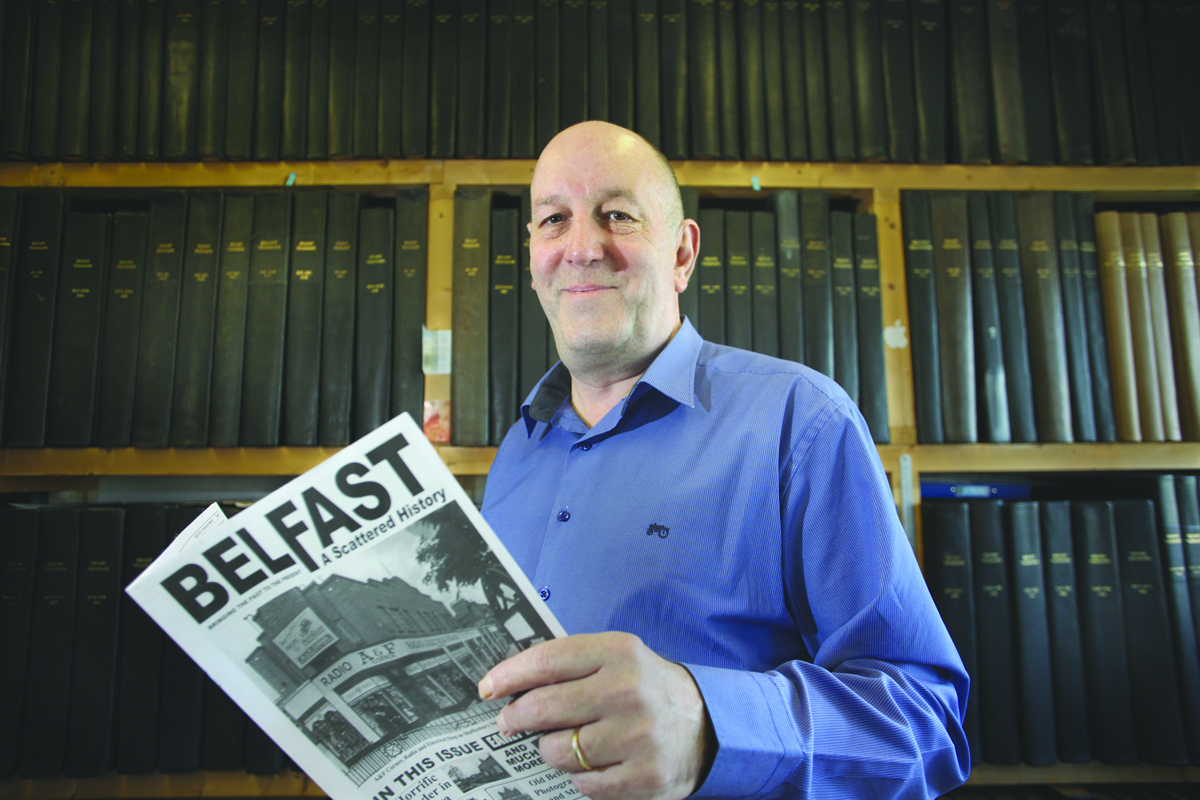HAVING been involved in community development for the best part of three decades, Joe Baker is a familiar face to many in North Belfast, but he is probably most recognised as one of the city’s leading resident historians.
Joe has been involved with the Ashton Community Trust virtually since its inception in the early-90s and now sits on its board. It was also during that time that he became involved in the Belfast History Project.
Throughout his career, Joe has written, and published, books, magazines and newspaper articles for a range of media outlets during his career but, unlike some historians, his expertise grew outside the confines of traditional academia.
By his own admission, he didn’t do too well at school, often “forgetting” to get off the bus at the gate. However, after returning to education at the Belfast College of Business Studies in the late 80s, he enrolled in history classes, which he would go on to utilise with the fledgling Belfast History Project.
“I came back from college and started to get people involved in learning about the history of the area,” he explained.
“From that, we discussed a number of different ideas. One idea we had worked on before that was cleaning up Clifton Street Cemetery – which was where we used to drink our cider. It was all overgrown and wrecked at the time, but we all got together to fix it up. We tied in with people like Enterprise Ulster, and then Belfast City Council took it over and a number of volunteers came on board. Through that we developed this interest in local history.
“Once the ball started rolling that was it. We started doing different educational projects. One of the things we started to discuss was putting a magazine together, which sounds very easy, but at that time there was this new thing coming out called a computer that you had to learn to use. Then you had to learn the computer programmes, which in those days was Pagemaker. Then you had to learn about printing and all the rest of it. Once we go up and running everything just fell into place.”
The Belfast History Project has been exemplary in its endeavours, setting up groundbreaking publications and establishing history tours in long-unexplored areas of the city.
“One of the good things is that when you look in Belfast city centre now and you see all the tours done here and there – blue badge this, white badge that – we get to look at it and say we did it first,” said Joe with a smile.
“We did a walking tour in the Half Bap area and one of the very first tours was cancelled because of a bomb scare – not many tour operators can claim that.”
The end of the conflict has ushered in a new age of competition as various operators compete to sell tours of the ever-developing city of Belfast. While Joe believes the growing interest in local history is “brilliant” he insists branding and profits have often got in the way of fact.
“People are trying to put these brands on things,” he said.
“At my last count Belfast has nine-quarters. When I was at school, if I was asked how many quarters there were and if I had said nine I know what would’ve happened.
“There is a lot of false stuff like this Tribeca development, which is a lot of nonsense.
“They should do the names to reflect the history of the area. It annoys me when people try to put a false history on an area or say things that just aren’t true. We’ve always argued that if you’re going to do history you should tell the truth. I love to see the tourism industry grow and change, but as long as they stick to a principle of truth.”
Having started as a small local initiative, the Belfast History Project has flourished over the years, and now provides tours all over Europe, with their Russian tours booked up for nearly two years in advance. However, with all of its wider triumphs, the Belfast History Project remains a social enterprise, whose key aim is to give back to the community. Local tours and events still run regularly, such as the highly successful historical photographic exhibiton, which recently appeared in the New Lodge – and, as Joe explained, “It’s all about education”.
“If we get people into history we can get them into education and guide them along their own path,” he said.
“For example, we had a group of kids studying the history of the New Lodge, which grew to Belfast, Ireland and then Europe. They might be kids at the time, and they’ll mess about, but about ten years later they’ll come back to us and say ‘That was the best project I was ever part of’ and that gives us a buzz.”
Joe continued: “I remember years ago that the Barrack area in the New Lodge was just called the Barrack, but younger people didn’t know why it was called that. If you ask them now they’ll tell you it’s because there used to be an army barracks there.
“Whenever you do a photographic exhibition and people are learning about their own area, then that’s the start of an educational journey.
“As we always say, there is no more fruitful form of education than to raise the interest of people in their own surroundings.
“Once you do that it can open up countless other opportunities.”
History man Joe’s lifetime in community

LOCAL EDUCATION: Joe Baker of the Ashton Community Trust has seen the Belfast History project go from strength to strength





